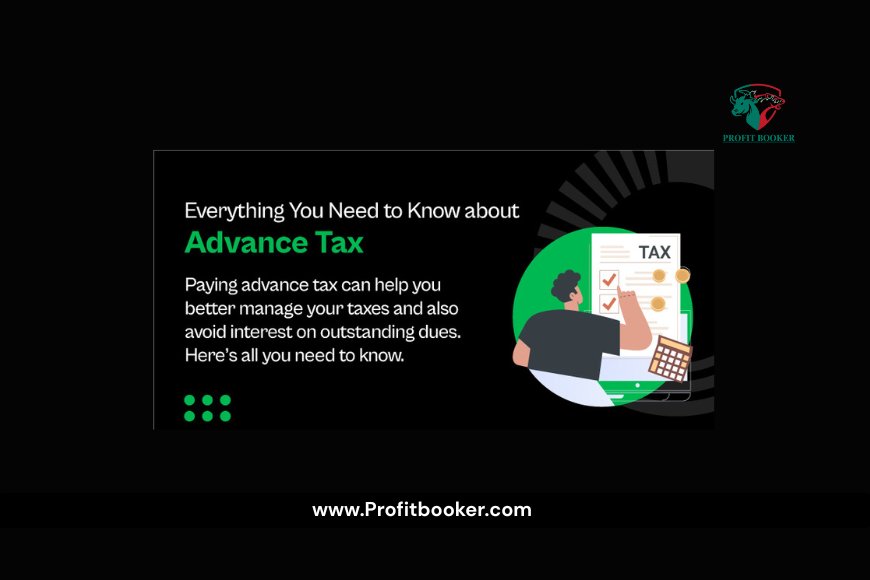Advance Tax Payment 2025: Due Dates, Calculation & Online Payment Guide
Advance Tax Payment 2025 is a must for taxpayers with liability above ₹10,000 in a financial year. This guide explains what advance tax is, who needs to pay, important due dates for FY 2025-26, and how to calculate your liability step by step. You’ll also learn how to pay online using Challan 280, penalties for late payments, benefits of timely payment, and key FAQs. Stay compliant, avoid penalties, and manage your taxes smartly with this complete guide.

Introduction
Most people think of income tax only at the end of the year. But if your annual tax liability is more than ₹10,000, the Income Tax Department expects you to pay taxes quarterly in advance. This system is called Advance Tax Payment—also known as the “Pay-As-You-Earn” tax.
In this guide, you’ll learn:
-
What is advance tax?
-
Who should pay it?
-
Due dates for FY 2025-26 (AY 2026-27)
-
Step-by-step calculation
-
How to pay online (Challan 280)
-
Penalties for delay
-
FAQs for clarity
Let’s simplify advance tax so you never miss a deadline.
What is Advance Tax?
Advance tax means paying your income tax in installments during the year instead of paying it all at once while filing ITR.
Rule: If your total tax liability > ₹10,000, you must pay advance tax.
Benefits:
-
No last-minute tax burden
-
Helps avoid penalties & interest
-
Keeps your finances disciplined
Who Needs to Pay Advance Tax?
Advance tax applies to multiple categories:
-
Salaried Employees
-
If your employer deducts TDS correctly, you may not need to pay.
-
But if you earn from rent, interest, freelancing, or capital gains, you must pay advance tax.
-
-
Freelancers & Professionals
-
Since income is irregular and not always subject to TDS, advance tax applies.
-
-
Businesses
-
Must estimate annual income and pay advance tax on profits.
-
-
Investors
-
Income from stocks, F&O, mutual funds, or real estate is taxable → liable for advance tax.
-
Exemption: Senior citizens (60+) who don’t have business/professional income.
Advance Tax Payment Due Dates (FY 2025-26 / AY 2026-27)
Advance tax is paid in four installments:
| Due Date | % of Total Tax Payable | Applicability |
|---|---|---|
| 15th June 2025 | 15% | All taxpayers (except presumptive scheme) |
| 15th September 2025 | 45% (cumulative) | All taxpayers |
| 15th December 2025 | 75% (cumulative) | All taxpayers |
| 15th March 2026 | 100% | All taxpayers |
| 31st March 2026 | Final chance to clear balance | Optional |
Under Presumptive Taxation (44AD/44ADA) → Pay the entire tax by 15th March 2026.
How to Calculate Advance Tax
Follow these simple steps:
-
Estimate total income → salary, business, rent, capital gains, FD interest.
-
Deduct exemptions & deductions → HRA, LTA, 80C, 80D, etc.
-
Apply tax slabs (old or new regime).
-
Subtract TDS already deducted.
-
If tax payable > ₹10,000, pay advance tax in installments.
Example:
-
Annual income: ₹12,00,000
-
Tax liability: ₹1,25,000
-
TDS: ₹50,000
-
Balance payable: ₹75,000
Advance Tax Installments:
-
June → ₹11,250
-
Sept → ₹33,750 (cumulative)
-
Dec → ₹56,250 (cumulative)
-
Mar → ₹75,000 (full).
How to Pay Advance Tax Online
You can pay through the Income Tax Portal using Challan 280.
Steps:
-
Visit Income Tax e-Filing Portal.
-
Select e-Pay Tax.
-
Choose Challan ITNS 280.
-
Enter PAN, assessment year, and payment details.
-
Pay via Net Banking / Debit Card / UPI.
-
Save challan receipt for records.
Penalties for Late Payment
If you miss deadlines or underpay:
-
Section 234B → Didn’t pay 90% of tax before March → 1% interest/month.
-
Section 234C → Missed installments → 1% interest/month on shortfall.
Timely payment = avoid unnecessary penalty.
Benefits of Advance Tax
-
Prevents year-end stress
-
Saves penalties & interest
-
Builds financial discipline
-
Helps government maintain revenue flow
-
Especially useful for freelancers & businesses
Advance Tax vs Self-Assessment Tax
| Basis | Advance Tax | Self-Assessment Tax |
|---|---|---|
| When to pay | Quarterly (during year) | After year ends, before ITR filing |
| Who pays | Taxpayers with liability > ₹10,000 | Anyone with balance tax left |
| Penalty | Interest for delay | Interest + late filing fee |
Common Mistakes to Avoid
Forgetting income from FDs, rent, or capital gains
Wrongly estimating deductions
0 Ignoring quarterly updates in income
Not saving challan receipt
FAQs on Advance Tax
Q1. Is advance tax mandatory for salaried employees?
Yes, if total liability (after TDS) > ₹10,000.
Q2. What if I overpay advance tax?
You can claim a refund in your ITR.
Q3. Can I revise advance tax mid-year?
Yes, adjust in the next installment.
Q4. Does it apply under new tax regime?
Yes, applicable in both regimes.
Q5. Can I pay offline?
Yes, via Challan 280 at authorized bank branches.
Conclusion
Advance Tax may sound technical, but it’s simply about breaking your tax into quarterly installments.
To stay compliant:
Estimate your income correctly
Pay on time (set reminders)
Keep challan receipts safe
Doing this will save you penalties, reduce stress, and keep your finances in order.
Pro Tip: Review your income every quarter to avoid underpayment.




